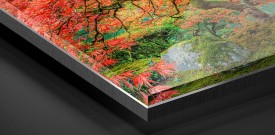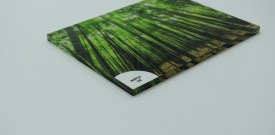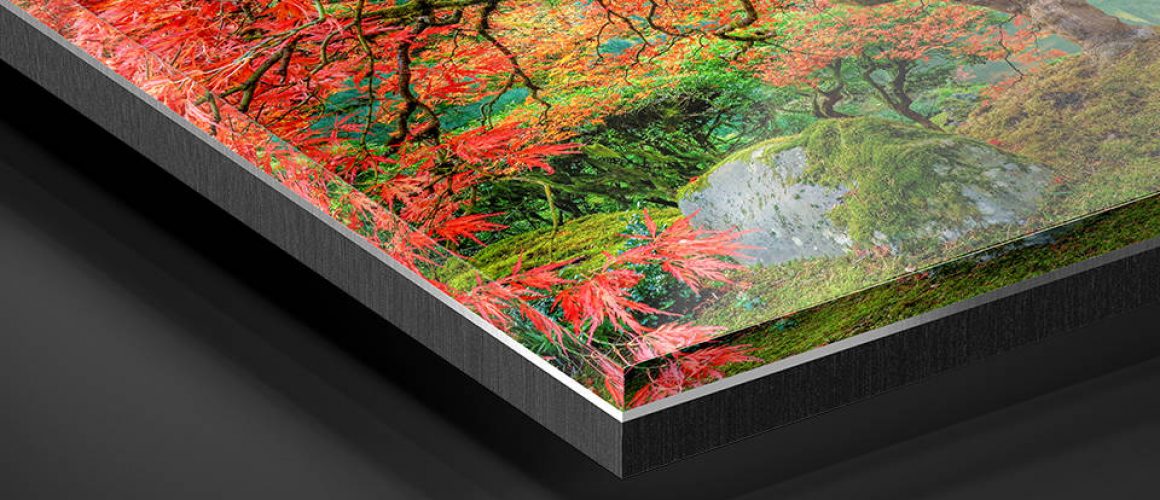Facemount or direct print on Acrylic
Both direct print on acrylic and offer their own benefits. Consult our 22-point guide to make the right decision.
- Production Process: The main distinction between face-mounted acrylics and direct print on acrylics lies in their manufacturing methods. Face-mounted acrylics require printing a picture onto photo paper, followed by positioning the paper beneath an acrylic sheet. In contrast, direct print on acrylics entails imprinting the image straight onto the acrylic sheet’s surface.
- Image Quality: Acrylic face mounts are renowned for their superior image reproduction. They utilize top-notch photographic paper, allowing for the use of premium-grade materials. Additionally, direct printing on acrylics can yield impressive images through flatbed printing techniques.
- Durability: Direct printing on acrylics tends to be more durable than face-mounted acrylics due to the process involving printing directly onto the acrylic surface, eliminating concerns about potential separation between the paper and substrate.
- Thickness: Direct printing on acrylics accommodates thicker sheets compared to face-mounted acrylics, resulting in a more substantial and robust product. However, thickness does not alter the appearance of the image.


Facemount Acrylic Direct print on Acrylic
- UV resistance: Direct print on acrylics typically offers superior UV resistance in comparison to face-mounted acrylics, as the ink is printed directly on the surface, providing enhanced protection against UV rays. In terms of color accuracy, face-mounted acrylics usually outperform direct print on acrylics. This is because the photographic paper used is designed to reproduce colors accurately.
- Size limitations: Face-mounted acrylics can be created in larger sizes, although this depends on factors such as paper size. Acrylic prints can be produced up to 60-96 inches, as the table on which the acrylic rests during manufacturing may limit the dimensions.
- Reflection: When compared to face-mounted acrylics, direct print on acrylics have a more reflecting surface. This is due to the ink being printed directly into the surface, resulting in a highly reflecting gloss.
- Surface Finish: Compared to direct printing on acrylics, face-mounted acrylics typically exhibit a more matte appearance. This is attributed to the matte finish of the photographic paper, which is subsequently mounted behind the acrylic sheet.
- Direct print on acrylics is more cost-effective than face-mounted acrylics, as it involves a simpler manufacturing process and utilizes fewer materials. Additionally, with no size restrictions imposed by photographic paper, direct printing on acrylics allows for larger dimensions.
- Durability: Due to the protective acrylic coating, both direct prints on acrylic and face-mounted acrylics boast exceptional durability. However, face-mounted acrylics offer enhanced scratch and crack resistance, thanks to the extra protective layer of acrylic.
- Lighting: Face-mounted acrylics exhibit greater reflectivity compared to direct prints on acrylics, as light bounces off both surfaces of the dual acrylic sheets utilized in mounting. Anti-glare acrylic can be employed for either option.
- Application: Printing directly on acrylics is ideal for creating vibrant, large-scale wall displays in interior settings, surpassing conventional prints. The added protective layer shields against UV light-induced fading, making face-mounted acrylics perfect for both indoor and outdoor applications.
- Care: Both face-mounted acrylics and direct print on acrylics have their ideal uses: fine art and high-end photography benefit from face-mounted acrylics, while direct print on acrylics excels in signage, displays, and various commercial applications.
- Production time: Direct print on acrylics can be produced in less time compared to face-mounted acrylics. This is because the production process is simpler and requires less time.
- Customization: Direct print on acrylics are more customizable compared to face-mounted acrylics. This is because the printing is done directly onto the surface, allowing for more flexibility in the design.
- Detail: Face-mounted acrylics tend to have better detail reproduction compared to direct print on acrylics. This is because the photographic paper used is of higher quality and can reproduce finer details.
- Texture: Direct print on acrylics tend to have a smoother texture compared to face-mounted acrylics. This is because the printing is done directly onto the surface, resulting in a smoother finish.
- Mounting: Face-mounted acrylics require mounting hardware, such as standoffs or brackets, to be installed on the back of the acrylic sheet. Direct print on acrylics can be mounted directly onto a wall or other surface.
- Weight: Directly printed acrylics tend to be lighter than face-mounted acrylics, as the printing occurs on the surface, yielding a slimmer product.
- Thickness choices: Direct printing on acrylics offers a variety of thicknesses for acrylic sheets, allowing for increased customization possibilities.
- Installation: Face-mounted acrylics necessitate a more meticulous installation procedure than direct print on acrylics. The mounting hardware must be accurately installed to guarantee the appropriate support and secure positioning of the acrylic sheet.




